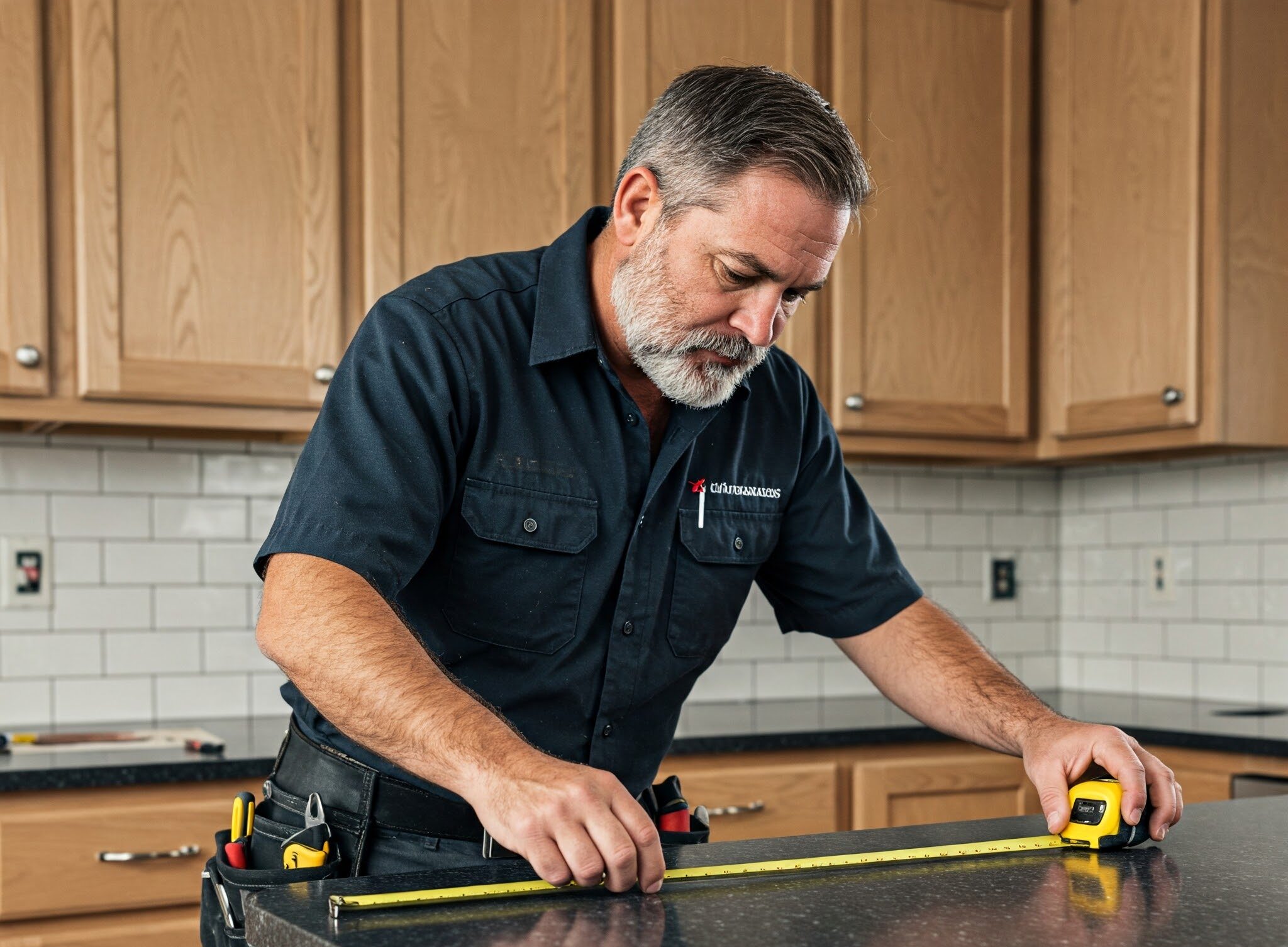
Question: How Do You Measure Countertop Space?
Answer: To measure countertop space get the length and width of each countertop section in inches. Multiply length by width to get the area in square inches. Add all areas together for the total square inches.
Countertop Measurements
Knowing how to measure countertop space accurately helps you plan renovations, choose appliances, and organize your kitchen effectively. This guide provides clear steps to measure your countertops correctly, ensuring you have the information you need for your projects.
Measuring Length
Use a standard tape measure. Extend the tape measure along the back edge of the counter, from one end to the other. Record this measurement in inches or centimetres. For L-shaped counters, treat each section as separate lengths.
Measure each straight section of the countertop individually. Add these individual measurements together for the total length.
Consider obstructions like sinks or cooktops. Measure around these to determine the usable countertop length.
Click here for more information on kitchen cabinet refinishing service Toronto
Related Article: How Much Counter Space Between Sink and Stove?
Related Article: How Much Countertop Space Do I Need?
Measuring Irregular Shapes
For curved or unusually shaped countertops, divide the area into smaller, manageable sections. Measure each section’s length and depth as if it were a rectangle. Add these measurements to calculate the approximate total area.
Use a flexible tape measure for curved sections. This type of tape measure allows you to follow the curves accurately.
Create a sketch of your countertop. Label each section with its measurements. This helps visualize the space and combine measurements accurately.
Calculating Square Footage
Multiply the total length by the depth to get the square footage. For example, a countertop 10 feet long and 2 feet deep equals 20 square feet. Convert measurements to the same units before calculating.
For L-shaped counters, calculate the square footage of each section separately. Add the individual square footages for the total area.
Remember to account for cutouts. Subtract the area of sinks or cooktops from the total square footage for accurate usable space.
Tips for Accurate Measurements
Always double-check your measurements. Errors can lead to costly mistakes when ordering materials or appliances.
Use a consistent unit of measurement (inches or centimetres) for all measurements to avoid conversion errors.
Write down your measurements clearly. Include labels for each section of the countertop. This ensures you have accurate records for future reference.
Using Graph Paper
Create a scaled drawing of your countertop on graph paper. This provides a visual representation and helps in accurate calculations, especially for complex shapes.
Digital Tools
Consider using digital measuring tools or apps. Some tools allow you to take photos and input measurements for automatic calculations.
Why Accurate Countertop Measurements Matter
Accurate measurements are essential for various kitchen projects. These measurements help you estimate material costs, choose appropriately sized appliances, and ensure a proper fit for new countertops. Accurate measurements also help in planning layouts and maximizing functionality.
Ordering the correct amount of countertop material depends on accurate measurements. This minimizes waste and avoids delays caused by reordering. Accurate dimensions are essential for a seamless installation. This saves time and prevents costly adjustments.
Conclusion
Understanding your countertop space helps you organize your kitchen effectively. This improves workflow and maximizes the usability of your space. Accurate measurements are vital for any kitchen renovation or upgrade, ensuring a successful and functional outcome.

Blue Malue Get in touch with Blue here.
